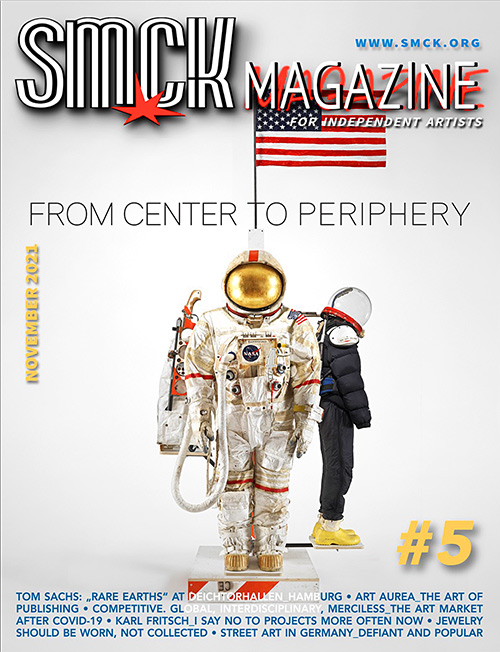CRAFTERS CAN RESTITUTE RESPECT FOR NATURE
ART AUREA PUBLISHER REINHOLDD LUDWIG ON THE CRAFTERS' VANGUARD IN THE ERA OF CLIMATE CHANGE.
Interview by Christoph Ziegler
 Reinhold Ludwig's blooming garden. Photo: R. Ludwig.
Reinhold Ludwig's blooming garden. Photo: R. Ludwig.
CZ: How did you decide to publish Art Aurea?
RL: Art Aurea was born in 1985 at the initiative of Munich-based goldsmiths. They were looking for a publishing house for a new magazine dedicated to the art of jewelry; the latter was still pretty unknown back then. At the time Germany was, next to Italy, the world's largest producer of industrial jewelry. In the 1970s, a very idealistic and lively jewelry art scene emerged in Europe, fueled by art schools and graduates of technical universities. This movement was also manifest in Japan and the United States. It was about jewelry as an art medium and an alternative to "soulless" jewelry made for the masses.

ART AUREA 1-2015. Necklace by Sofia Beilharz, worn by model Eulalia. Photo: Laurens Grigoleit.
The 'stars' of the time never saw themselves as crafters, but always as artists having the same significance as painters or sculptors.
Similar developments took place in ceramics, studio glass, silversmithing, and textile art. It was the time of breakthroughs. During this period, the Italian designer groups Alchimia and Memphis, as well as the New German Design, garnered a lot of public attention. I only realized lately how important Art Aurea was for this era of creative breakthroughs.
CZ: What has changed in the meantime regarding the production and perception of crafts? How has your readership changed?
RL: There are still very good and ambitious artists working in all disciplines. However, the mood of the 1970s and 1980s to move into new directions has long gone. Probably the highest standard, at the moment, of crafts quality is set by Loewe Foundation Craft Prize. In general, in the industrialized countries, the appreciation of the crafts - also because of growing ecological awareness - is bigger now.
CZ: Your personal and publishing philosophy, which is expressed through Art Aurea, is based on an alternative, holistic, and ecological approach to arts and crafts.
RL: I grew up in a rural region in the 1950s and 1960s. There were still flower meadows, naturally-grown hedges, healthy forests, and an incredible variety of birds and insects. In the last 50 years, this wealth has been largely destroyed by industrial agriculture, the madness of constant growth, and the "modern" way of life.

ART AUREA 3-2010. Simone Cosac Naify we- aring a necklace by Marzia Rossi, a bracelet by Luicia Massi, and a ring by Manfred Bischof. Photo: Federico Cavicchioli.
Since the 1980s I have been active, together with my wife, in initiatives to protect the environment and recognized early on that there is a significantly higher sensitivity in the arts and crafts scene for a holistic, ecologically-oriented way of life and for understanding the interdependencies that form the "big picture." This is why our articles not only try to shed light on the works of art, but also on the artist's, gallerist's, or collector's way of life. Through this holistic approach, we can show our readers that a meaningful and good life is possible, without the excesses of thoughtless consumption.
CZ: You are a member of the German association Bund Naturschutz and a local initiative for wildlife preservation - non-profit organizations committed to nature and environment. How can design, applied arts, and crafts make the public aware of climate change and extreme environmental destruction as well as of the eventual solutions to the problems we now face?
READ THE FULL ARTICLE IN THE DIGITAL OR PRINT VERSION...







